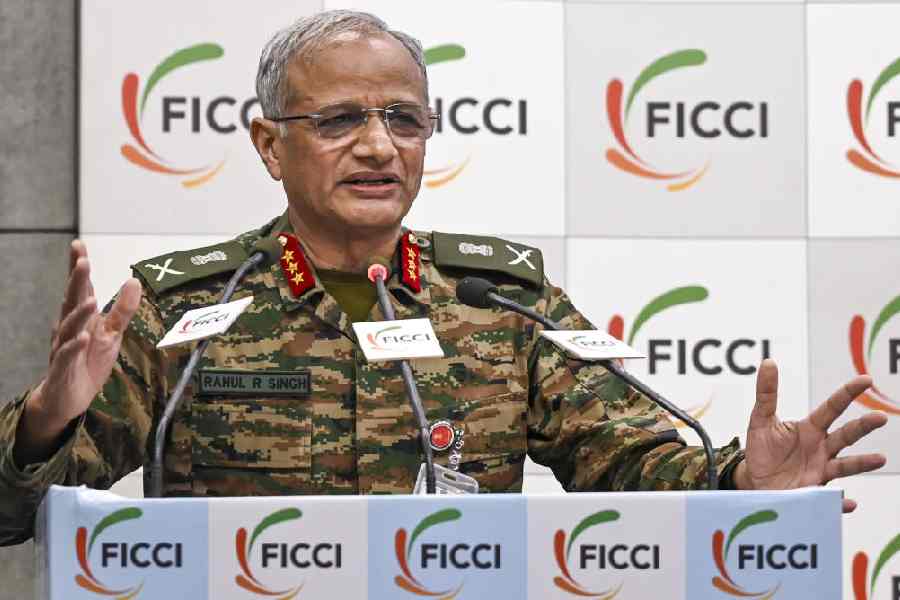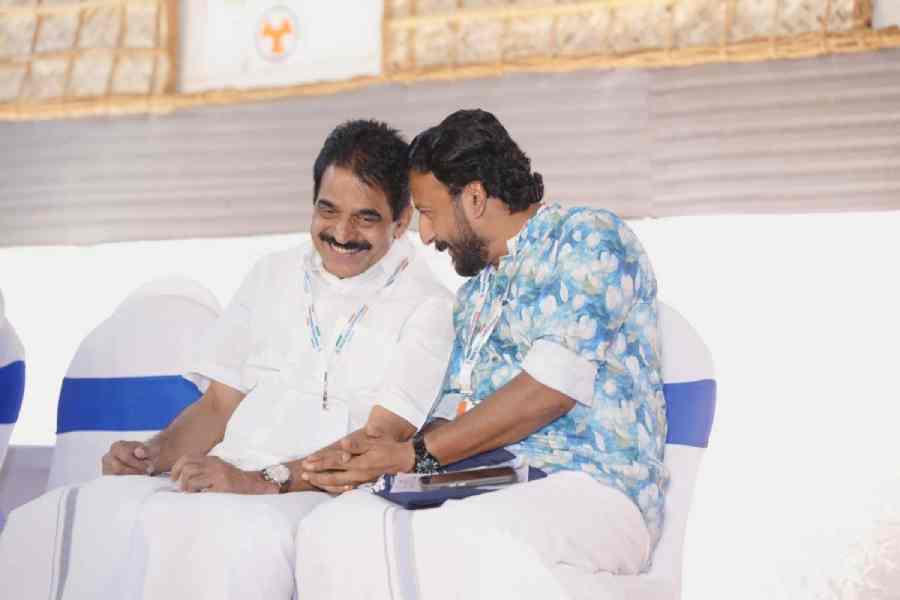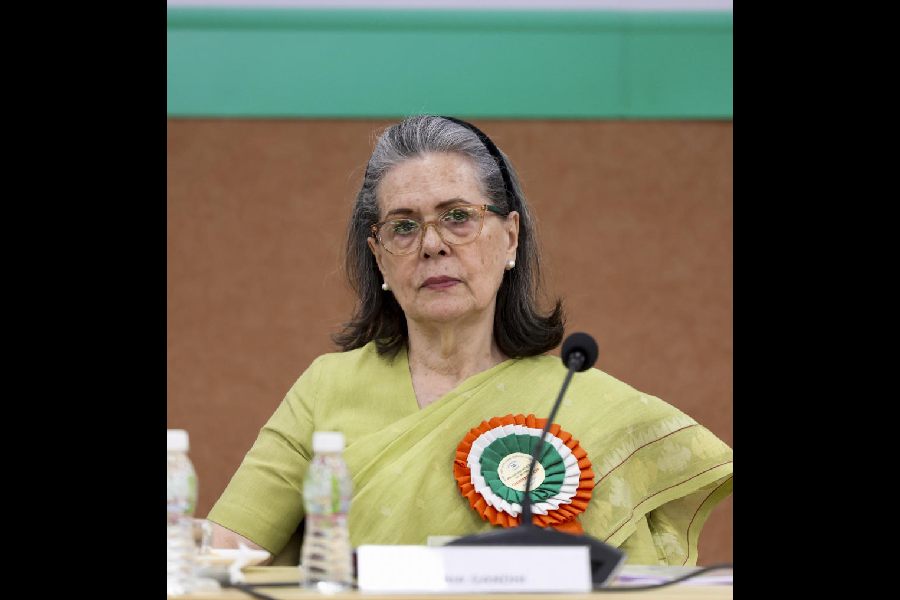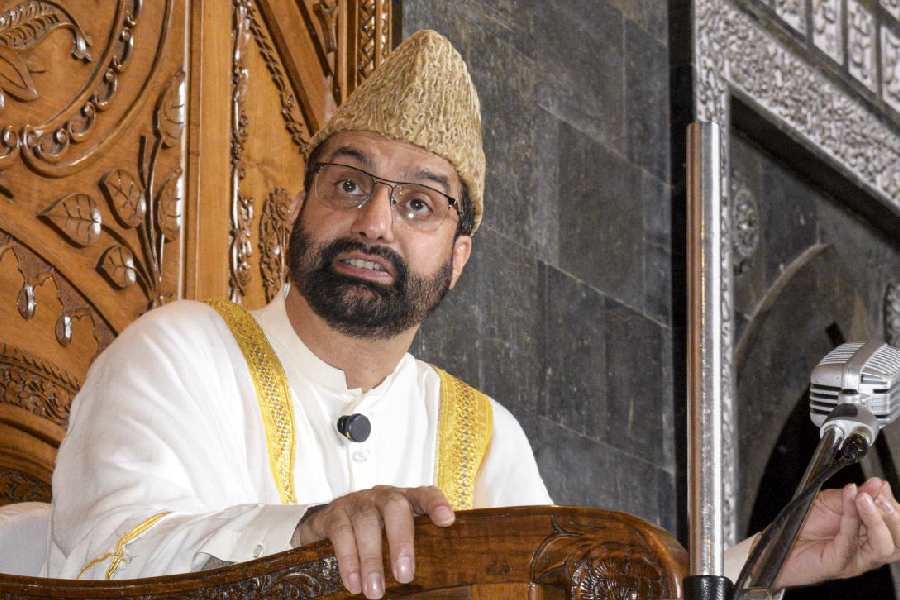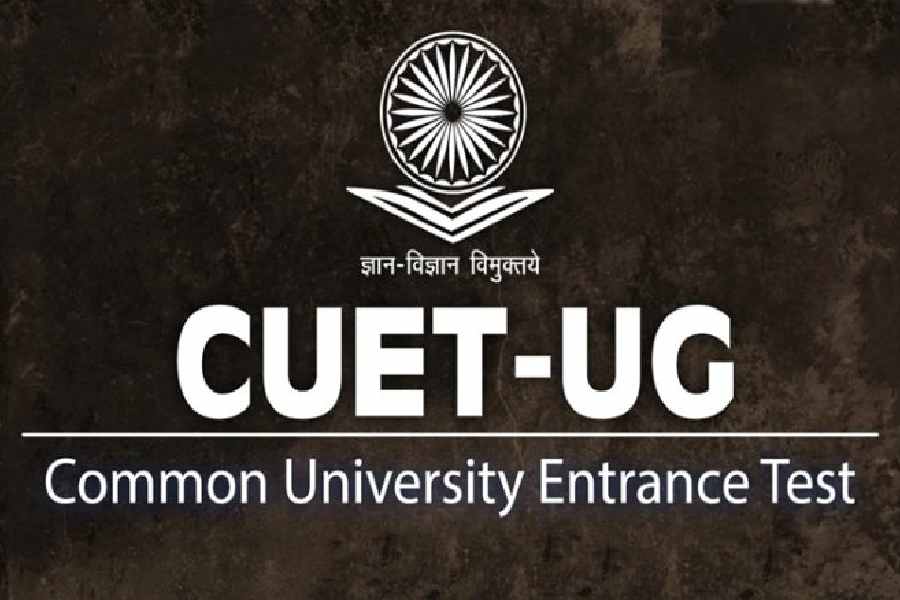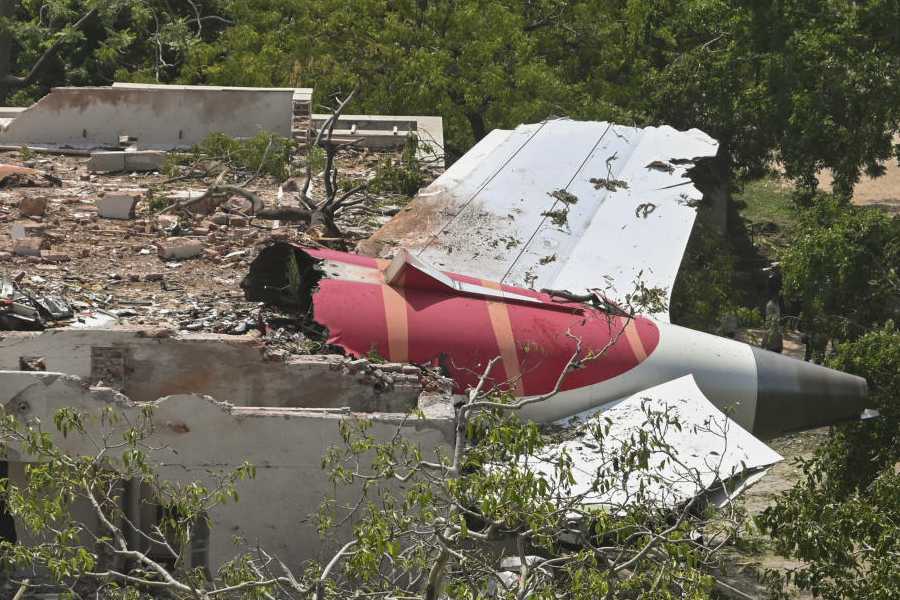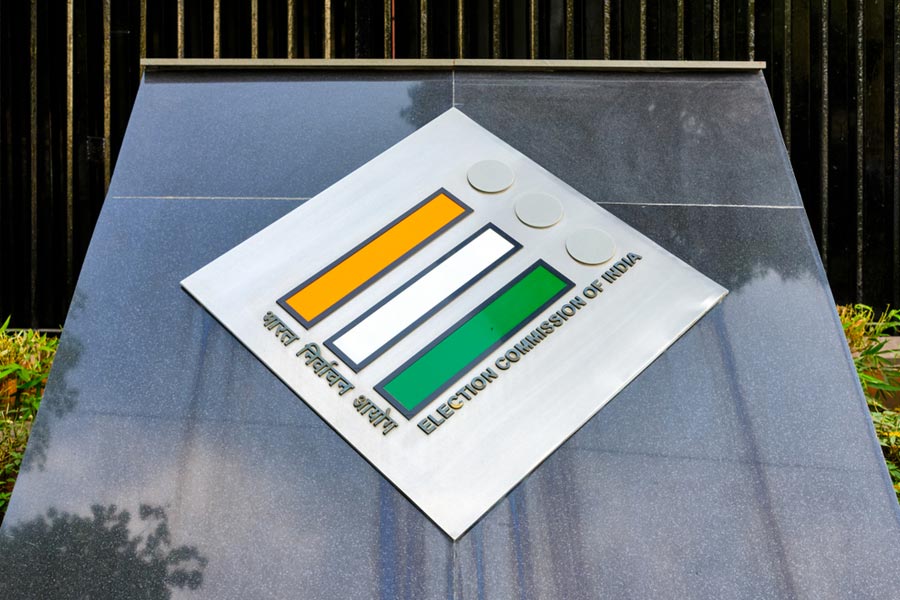 |
 |
| Bishop’s College from outside and inside. Pictures by Bishwarup Dutta |
Bishop’s College is on the Beckbagan end of AJC Bose Road, that remains crowded at most hours of the day. Yet, owing to its sprawling grounds, perpetual peace — save the occasional, distant honk — seems to reign there. Till the late 1960s, the grounds were larger, when parcels of land along Ballygunge Circular Road were leased out, where multi-storeyed apartment blocks came up.
I entered Bishop’s College only recently, when I went to see an exhibition of Madhvi Parekh’s paintings of Christ held inside St Thomas’s Chapel on campus. In the middle is a large field, and to its right is the double-storeyed building where the single students, some in colour T shirts, are accommodated.
The college was requisitioned in 1942, when World War II broke out and it shifted to Khatauli in western Uttar Pradesh. So these are still called the barracks. Adjacent to it is a handsome building that houses the library and archive dating back to the 1880s, the oldest section of the college. The flyover is the same height as these buildings.
Alex Bremner, lecturer in architectural history at the University of Edinburgh, in an email commented on the architecture of the chapel. “The building is a fine specimen of the heavy, sober, and rather minimal classicism that characterised much European architecture in India. The exterior is in a somewhat generic, even nondescript, form or astylar classicism. The stuccoed rustication is a very Edwardian thing. So, too, are the volutes ‘buttresses’ and broken pediment.
“The interior is distinguished by its rows of Ionic columns running down either side of the nave, and the rather neo-Mannerist chancel arch is, again, an Edwardian affectation. I don’t know if the colours are original — probably not. The altar appears to be a fine piece of liturgical furniture with its polychrome marble inlay panels. Again, very neo-classical in inspiration.
“The so-called ‘Edwardian Baroque’ or ‘Grand Manner’ style of architecture, of which the chapel appears to be a basic exemplar, began to manifest itself in the 1890s.”
The structure of this elegant, single-storeyed chapel was dramatically lit, and hundreds of candles were burning inside its vast interior cell from which all pews had been removed so that the congregation could sit on the floor, Indian-style.
The college has travelled the path of indigenisation ever since it was established in 1820 at Shibpur and moved to Beckbagan in 1880. Thomas Fanshawe Middleton was the first bishop in India at a time when the See of Calcutta comprised the whole of the British East Indies. This was when several prominent Christian educational institutions such as the Baptist College, Serampore, Church Missionary Society and St Paul’s School were founded, long before the arrival of Alexander Duff and prior to Macaulay writing his famous minutes on English education mass-producing babus. Bishop Middleton had received funding (£5,000) to establish a mission college close to Calcutta.
Bishop Middleton laid the foundation of the college on December 15, 1820, at Shibpur in Howrah where buildings resembling those in Oxford and Cambridge were constructed by 1824. This is where Michael Madhusudan Dutta had studied and a building is still named after him. Another noted convert was Krishna Mohan Banerjee, who was buried here.
The stress was on classical studies, but it did not turn out to be a “great Christian University” as it was meant to be. In 1880 “the great migration” happened. The splendid buildings in Shibpur were sold to the government to become what is now known as the Bengal Engineering and Science University.
It first shifted to Shakespeare Sarani, and thereafter to its present location. At its main gate was a building known as Nawab ki kothi, that has disappeared. Revd Henry Whitehead, a fellow of Trinity College, Oxford, was appointed its principal, and during his 15-year tenure it was once again a true theological college with students from all over the world.
Sunil Michael Caleb, principal, Bishop’s College, says there was a movement for church unity in early 20th century, and in 1947 the Church of South India was formed by uniting Anglicans, Presbyterians and Methodists. A wider union of six denominations (churches) came under the Church of North India (CNI) formed in 1970. Till 1970, Bishop’s College was under the Church of India Pakistan Burma and Ceylon. Now it is a CNI college for training priests offering Bachelor of Divinity as in the UK and Scotland.
In 1827, the king of Denmark allowed William Carey to give degrees, and Serampore College was one of the first modern universities in India, older than Calcutta University, which opened in 1857.
Later, when the college was handed over to the British, the king of Denmark ensured that the rights of Serampore College were respected in the new dispensation. Using that right, Serampore College grants degrees in Christian theology. Bishop’s College and another 50 Protestant and Orthodox churches have affiliated themselves to Serampore College and get their degrees from there. On the one hand, Serampore College grants degrees in arts, science and commerce through Calcutta University, while the Senate of Serampore college grants degrees in theology.
Till the 1970s women were neither part of the faculty nor of the student body. Now there are two female faculty members and around 20 per cent of the students are women. After the mid-1970s the rule of wearing cassocks was relaxed as well. Now the stress is on engaging with the world and entering into a dialogue with other religions.


